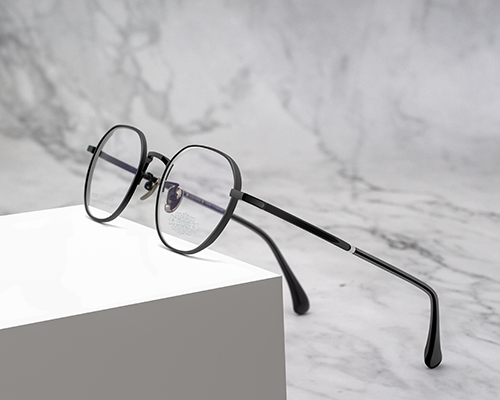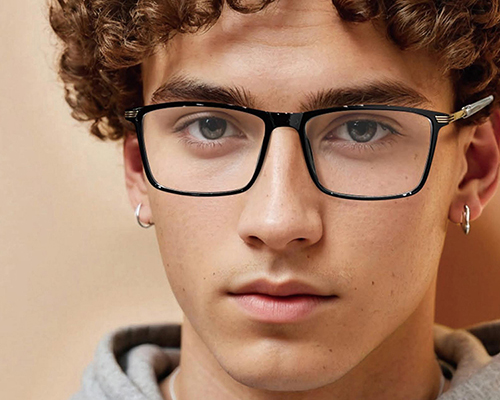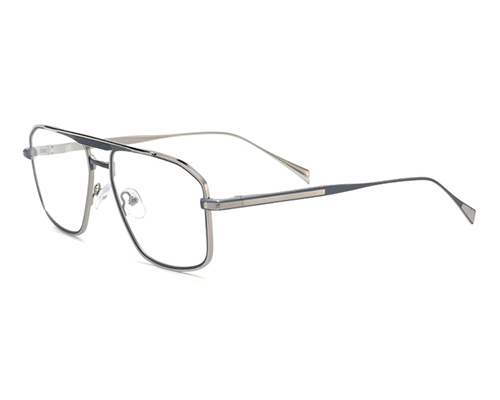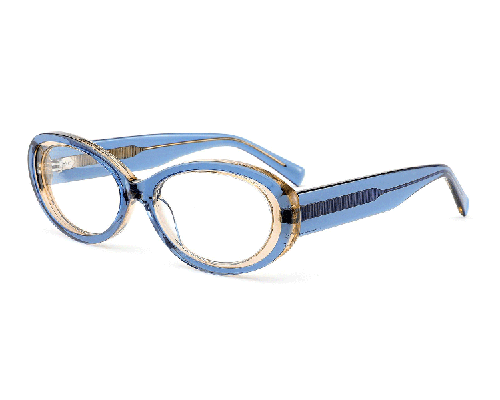Views: 0 Author: MATT Publish Time: 2024-11-23 Origin: Site








For customers with high prescription lenses, choosing the right pair of glasses is not just about personal style — it's about achieving the perfect balance between functionality, comfort, and aesthetics. Strong prescriptions often require thicker, heavier lenses, which can affect both the appearance and comfort of the eyewear.
For optical wholesalers and distributors, understanding what glasses frames are best for high prescription is crucial. High-prescription customers need frames that can support heavier lenses, provide long-lasting comfort, and still look fashionable. This guide will help you identify the best materials, frame shapes, and designs to meet these demands — while optimizing your product offerings for B2B success.
Before recommending the right frames, it's important to define what qualifies as a “high prescription.”
Nearsightedness (Myopia): -6.00 diopters or higher
Farsightedness (Hyperopia): +5.00 diopters or higher
Astigmatism: Cylinder above 2.00
These stronger prescriptions require lenses with greater corrective power, which leads to thicker lens edges and additional weight. Without a proper frame match, the result can be visual distortion, lens slippage, and discomfort.
To minimize these effects, customers often choose high-index or aspheric lenses, which reduce thickness while maintaining clarity. However, even the best lenses need the right frames for high prescription glasses to perform optimally.
The frame material determines how well it can support thick lenses while maintaining comfort and durability.

Why it works:
Titanium is lightweight yet incredibly strong — an ideal material for holding heavy, high-index lenses securely. It's corrosion-resistant, hypoallergenic, and retains its shape over time.
Advantages:
Ultra-light yet strong for thick lenses
Premium look and feel
Long-lasting and skin-friendly
Recommended for:
High-end collections and customers prioritizing both strength and comfort.

Why it works:
TR90 is an advanced thermoplastic known for its flexibility, impact resistance, and feather-light comfort.
Advantages:
Excellent flexibility and pressure resistance
Comfortable for extended wear
Perfect for active or younger users
Recommended for:
Casual eyewear collections or cost-effective optical solutions.

Why it works:
Acetate frames are strong, easy to adjust, and visually appealing. Their thicker construction also helps conceal lens edges, making them an excellent option for high prescriptions.
Advantages:
Stylish, durable, and easy to adjust
Supports lens thickness without distortion
Offers vibrant colors and patterns
Recommended for:
Fashion-focused eyewear collections seeking a balance between structure and design.

Why it works:
Metal frames — particularly stainless steel and alloy — offer a sleek, minimal design with excellent adjustability.
Advantages:
Adjustable nose pads ensure proper lens alignment
Timeless, professional appearance
Good structural stability
Recommended for:
Business and classic eyewear lines.

Smaller frames reduce the visible lens edge thickness and minimize optical distortion. They are the most practical choice for high prescriptions.
Best Small Frame Styles:
Round Frames: Evenly distribute lens thickness and maintain a balanced look.
Oval Frames: Offer softer aesthetics, suitable for various face shapes.
Square Frames: Add a bold, structured appearance while keeping lens edges contained.
Full-Rim Frames: Best for high prescriptions. They completely encase lenses, hiding thick edges and providing strong support.
Semi-Rimless Frames: Lighter but may expose thicker edges.
Rimless Frames: Not recommended for high prescriptions due to stability and distortion issues.

Thick-rim glasses frames are both functional and fashionable for high prescriptions. Their robust structure conceals thick lens edges and distributes weight evenly.
Advantages of Thick-Rim Frames:
Hide lens thickness for a cleaner aesthetic
Provide superior stability and strength
Enhance overall comfort and wearability
Tip for Retailers:
Avoid oversized frames for strong prescriptions. Larger lenses increase thickness, weight, and distortion. Stick to compact, full-rim styles for best results.
For eyewear wholesalers, offering the best glasses frames for high prescription is not just about variety — it's about precision and value.
Stock Multiple Materials: Combine titanium, acetate, and TR90 to serve diverse needs.
Focus on Frame Size: Include compact and small designs to reduce lens bulk.
Emphasize Comfort: Lightweight and flexible materials ensure better customer satisfaction.
Provide Education: Guide retailers on matching frame types with prescription strengths.
By curating a thoughtful selection and educating your retail partners, you'll position your business as a trusted optical solutions provider.
Lightweight Design: Demand for ultra-light frames continues to grow among high-prescription wearers.
Premim Materials: Titanium and combination frames are now viewed as both luxury and practical options.
Sustaiable Choices: Bio-acetate frames appeal to eco-conscious consumers.
Customization: Retailers increasingly prefer OEM/ODM options to align frame design with lens specifications.
When it comes to sourcing reliable glasses frames for high prescription lenses, IU Eyewear stands out as a professional manufacturer offering:
Titanium frames for durability and elegance
TR90 frames for flexibility and comfort
Acetate and combination frames for fashion versatility
Compact and thick-rim styles that minimize lens thickness
IU Eyewear supports eyewear wholesalers and optical retailers with ready-stock frames and OEM/ODM customization. Each frame is precision-engineered to maintain balance, clarity, and comfort for high prescription users — ensuring optical performance meets market style trends.
Conclusion
High-prescription eyewear requires more than standard design — it demands precision, strength, and thoughtful engineering. For optical distributors, understanding the ideal materials, shapes, and structures is key to satisfying both retailers and end-users.
By focusing on small, full-rim frames made from titanium, acetate, or TR90, distributors can confidently serve the growing market of customers with strong prescriptions.
Partnering with a trusted manufacturer like IU Eyewear ensures that every pair of glasses is not only functional and comfortable but also stylish — helping your business deliver real value in every frame.